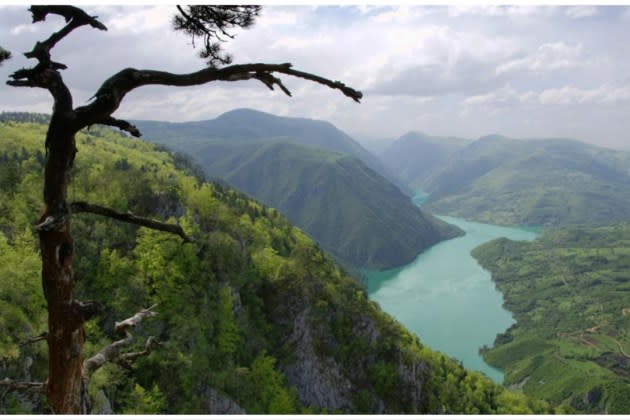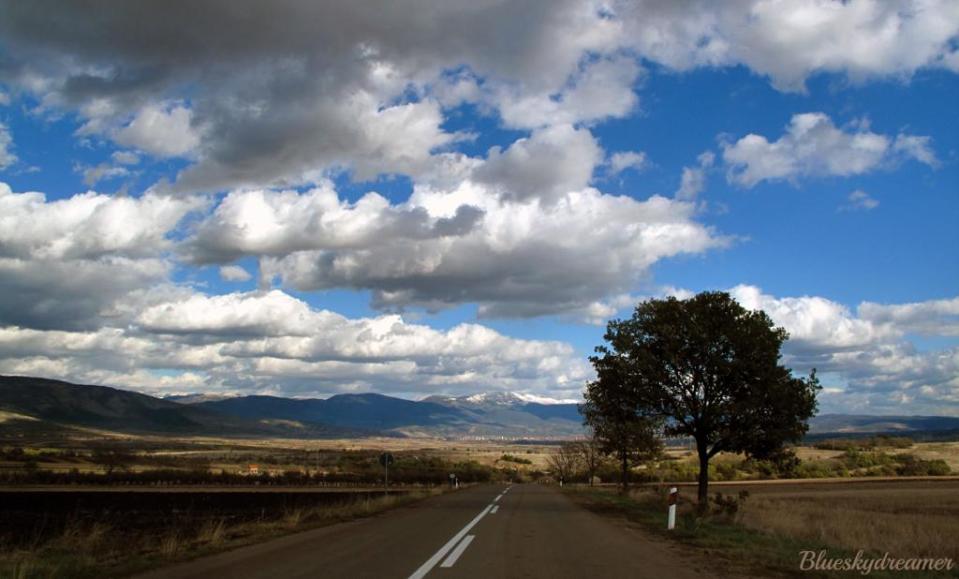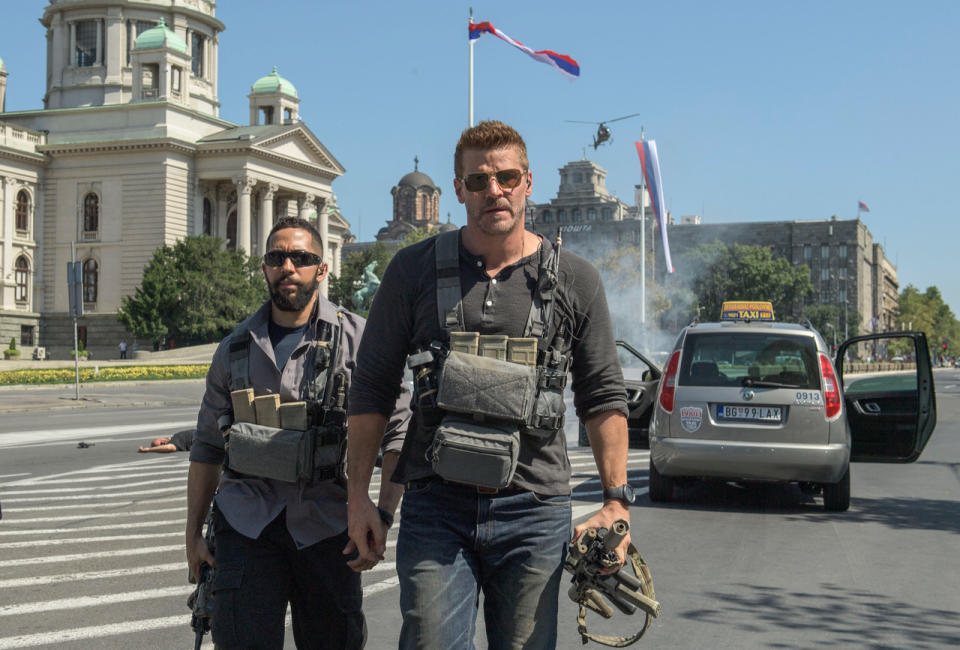Hot Spots: How Serbia Has Quietly Become A Competitive European Destination For Foreign Film Shoots

As producers across the globe continue to feel the effects of inflation on their budgets, a growing number of European countries have been seeking to alleviate some of that budget squeeze as they battle it out to entice foreign projects to shoot on their home turf. One front runner in this race is Serbia, which has been quietly establishing itself as a trusted and attractive destination for global producers.
The Balkan country not only has one of the lowest production costs in Europe but offers a tried and tested 25% to 30% rebate on local spend, an established professional film crew, varied locations and a host of world class film studios that have seen the country fast become a sought-after destination for international productions to set up camp.
More from Deadline
Milena Radulovic, Juanlu González & Luis Fernández Lead Cast For Spain-Serbia Thriller Series 'Scar'
“We never really advertise our services in Serbia,” says producer Andjelka Vlaisavljevic, who is largely considered one of the early producers to lure Hollywood into Serbia via her Belgrade-based outfit Works In Progress. “I think our work actually does the job for us and it has since spread through word-of-mouth. We are Eastern European and there are these stereotypes of us not being transparent, but these are just that – stereotypes. And anyone that has worked here in Serbia and is familiar with our stellar production services, particularly in the production design and accounting departments, knows that we are honest and fair and develop strong relationships with many of the production teams who come to shoot here.”
Vlaisavljevic’s company has facilitated a huge number of large projects into the country such as Netflix’s Glass Onion, Johnny Depp starrer Minamata and British-American crime series Miss Scarlet and The Duke. “We have a fantastic relationship with that team,” she says of the latter. “They shot all of their series out here and use the same crew – from directors to DoPs to production designers and costume designers. It’s just a great repeat relationship we get to have and a vote of confidence for our industry.”
On Glass Onion, Vlaisavljevic and her team were integral to putting together the interiors for that starry project, which were all shot in Serbia while the exterior locations were lensed on the Greek island of Spetses.
Vlaisavljevic notes that it’s historically been difficult to compete with neighboring European cities such as Budapest or Prague, but its locations, craftsmanship and competitive pricing are putting the country on the global production map.

In 2016, the government introduced a 25% case rebate (which rises to 30% for projects with a budget of more than €5 million) across film, television, documentaries, VFX and TV commercials (it’s the only country in Europe to extend the rebate to the latter). Since then, its government says it’s seen more than €300 million in domestic and foreign private investments into the country as well as a 39% increase in employment in the industry since 2019.
“The government is extremely supportive of the industry also in terms of film friendliness on national and municipal levels and is spending more than 100 times what it did on the film sector just a decade ago,” says Ana Ilić, Senior Advisor to the Prime Minister for Creative Industries and Tourism. “There is also the widespread availability of public spaces as filming locations and the awareness of public officials of the importance of the sector. Across the Balkans, more broadly, we offer everything from majestic mountains, idyllic coastal regions, modern cities and rolling hillsides covered in forests. The former Yugoslavia was once the second biggest European production destination outside of the UK and producers can still take advantage of that diversity today.”
Indeed, there’s a rich cinematic history in the territory, which is part of former Yugoslavia. Hollywood epics such as Fiddler on the Roof, Genghis Khan and Clint Eastwood starrer Kelly’s Heroes all shot in the territory. In addition to Eastwood, movie icons such as Burt Lancaster, Sidney Poitier, Orson Welles and Harrison Ford have all shot on location in former Yugoslavia.
Producer-director Jonathan English, whose Balkanic Media is based at Belgrade’s Pink Films International Studios, notes this history is “significant because it’s created an industry and a knowledge of moviemaking within the region.”
English, who directed Paul Giamatti starrer Ironclad and its sequel Ironclad: Battle for Blood, moved to Belgrade in 2016 after having a positive experience shooting the sequel in Serbia.
“There is this great heritage of filmmaking here that did not previously exist in any other Eastern Bloc countries,” he says, adding that many crew members he currently works with started working on some of these historical epics in the 1970s and 1980s or have older relatives who did.
“When I moved here from Los Angeles seven years ago, a lot of people thought I was crazy but I can say it was one of the first times in my career where I felt like I was in the right place at the right time and being one of the few international people to set up camp here was really beneficial,” says the British filmmaker, whose company has produced projects such as fantasy-adventure series The Outpost for The CW, David Boreanaz starrer Seal Team for CBS and Paramount+ and The Ark for Syfy all in Serbia.
“I think Serbia is arguably one of the best countries in Europe for production,” he notes. “Not only is it economically one of the most competitively priced countries in Europe, but its rebate is run extremely well and has been consistently paying out every single year since it started in 2016. The country has a very developed film industry with a very broad depth of crew and the studios are top notch.”
He also points to the fact that Serbia has no fringes, unlike countries like Greece and Italy where the fringe rate is high. “The rate you pay for an electrician, is the rate within the budget and it’s the rate you actually paid – there’s no fringes on top of it. So, it’s an incredibly competitive rate for the electrician and plus you’re getting 25% or 30% back from the government in the rebate. All of that combined with the experienced crews, the growing facilities and depth of crew makes it, what I consider to be, the best place in Europe to be making production, which is why I’m here.”

To boot, there has been a huge inpouring of investment into all industries in Serbia, which, says Ilić, has been a key target for the country’s economic growth.
“Our goal is to continue to expand Serbia from a pure filming location into a dynamic screen production partner with a stake in the development and exploitation of intellectual property,” she says. “With the support of major local telecoms partners, Serbia is producing increasingly successful television series that are in demand by audiences across the region and Europe. Banking facilities are developing to cash flow the rebate and we also have a small, but flourishing screen tech and creative tech industry with companies like 3Lateral [which was recently bought by Epic Games] and Wonder Studios producing exceptional work that will change the face of the business globally.
“Synergies further exist with the hugely successful local gaming industry and growth in investment in facilities such as studios and post sound houses, even the creation of professional crew and actors’ agencies all suggest growing confidence and maturity in the sector that is no longer purely reliant on international producers selecting our locations.”
Ivana Mikovic, Managing Director of the newly built Firefly Studios (read more about the studios here) and Firefly Productions, is encouraged by the “positive feedback” she’s had from international producers who have filmed in Serbia. Mikovic’s production company is one of the market leaders in content and, one of the company’s latest projects Constantine’s Crossing, a supernatural World War II story about a Nazi’s hunt for powerful relics that once belonged to the Roman Emperor Constantine the Great, is one of the largest local productions to be made in the country.
“We’re finding that people are really enjoying their experiences here in Serbia and we’re happy because they are happy,” says Mikovic. “I think now we’re going to see an influx of bigger projects coming to Serbia who are going to spend more time here, which is really encouraging for our industry.”
Best of Deadline
2023 Premiere Dates For New & Returning Series On Broadcast, Cable & Streaming
Greta Gerwig To Receive Palm Springs Film Festival's Director Of The Year Award
2023-24 Awards Season Calendar - Dates For Oscars, Emmys, Grammys, Tonys, Guilds & More
Sign up for Deadline's Newsletter. For the latest news, follow us on Facebook, Twitter, and Instagram.

